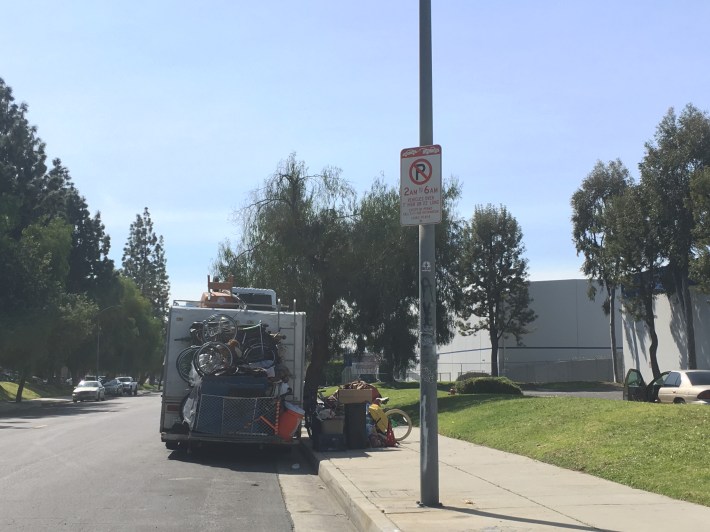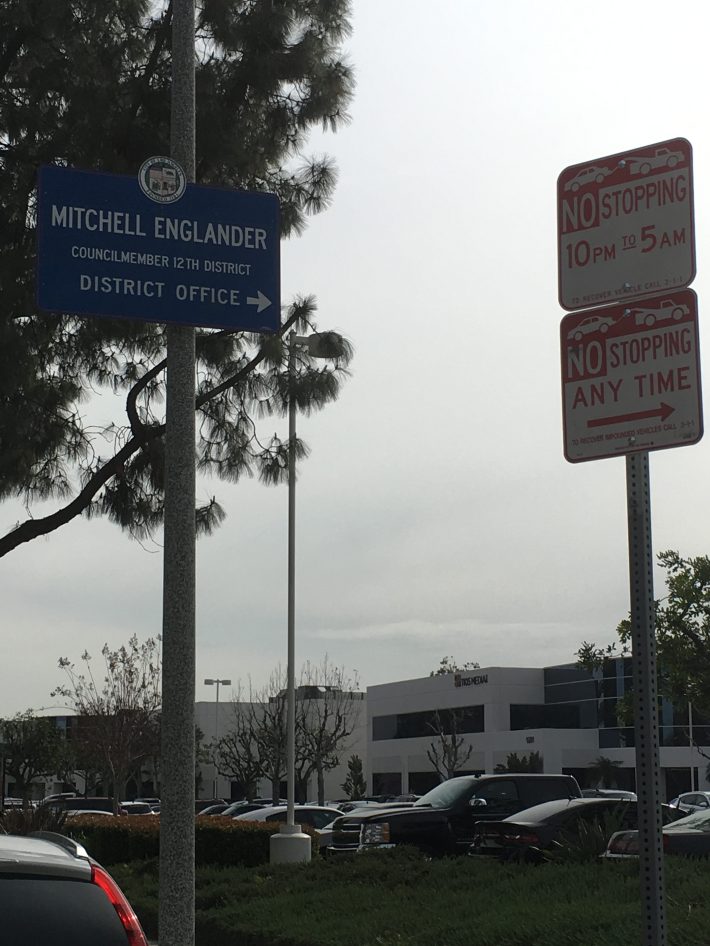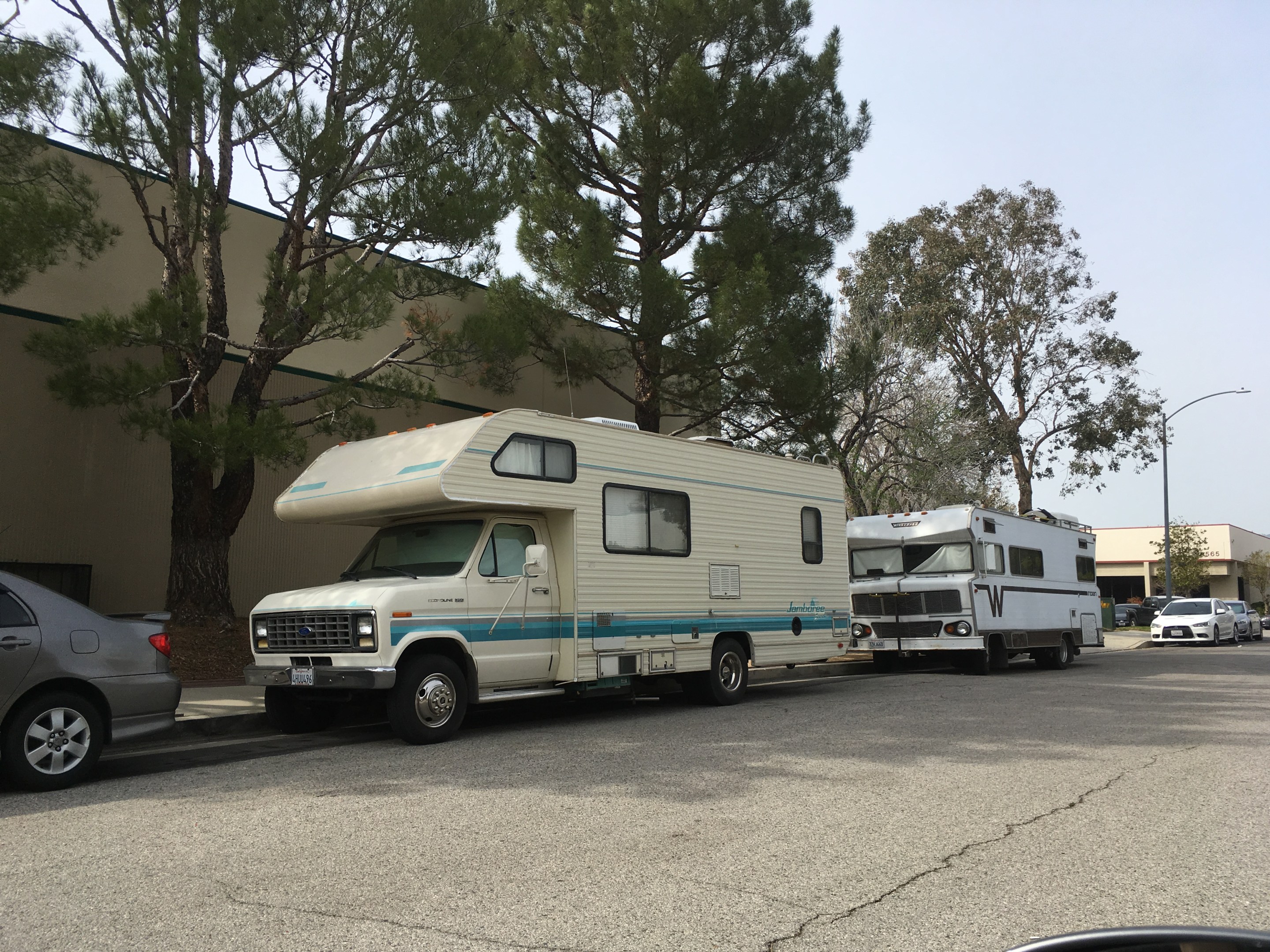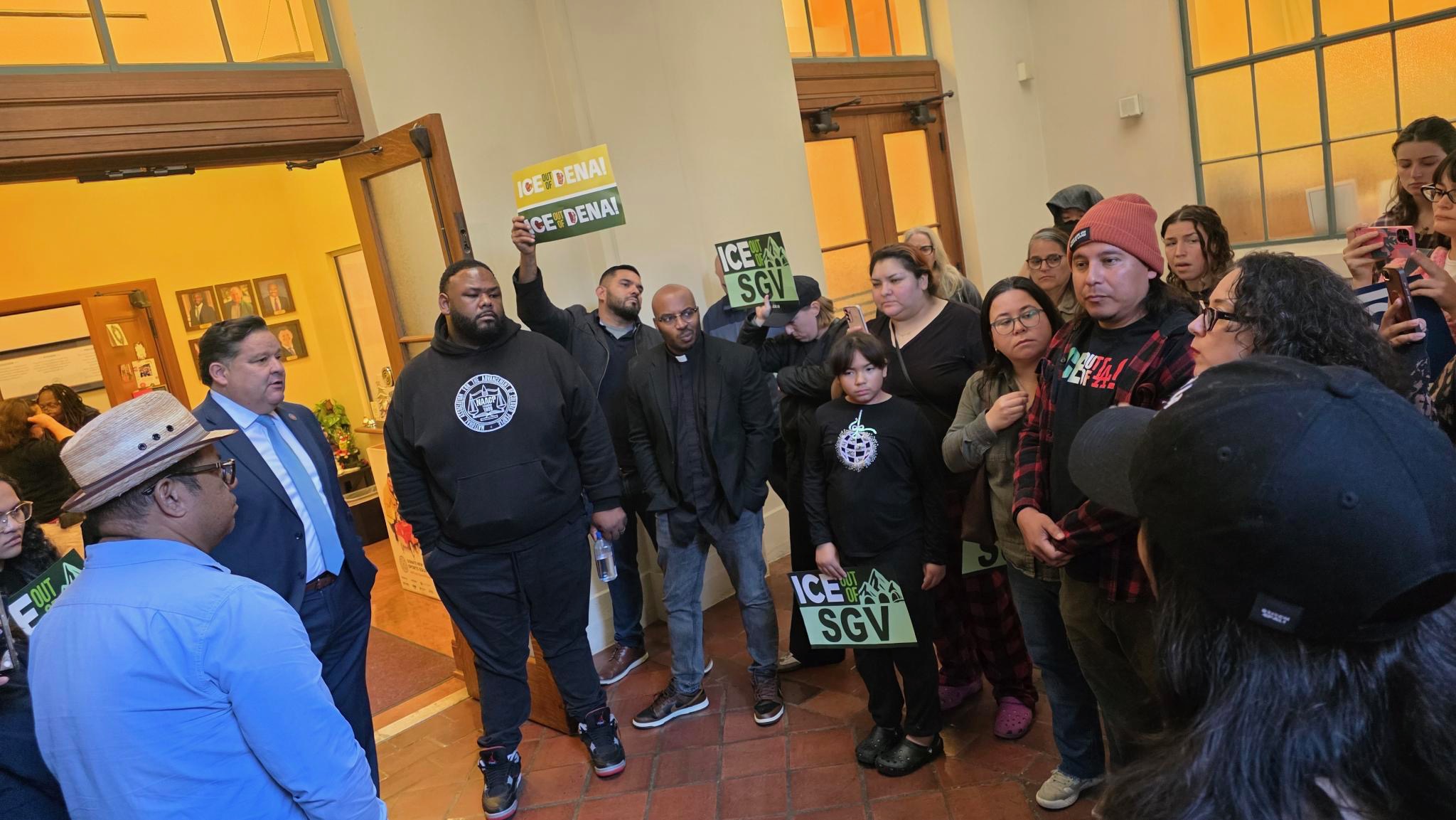[dropcap size=big]D[/dropcap]arren Gannon, 50, grew up in Woodland Hills, in the southern end of the Valley, in a five-bedroom house on half an acre. When his parents passed away, and after a series of mishaps with his inheritance, he ended up on the street. He never really got the opportunity to develop job skills to support himself. Gannon has a stutter; he has struggled with alcoholism for much of his adult life.
About five years ago, he saw a motorhome parked on the street with a for-sale sign and decided it was a great option to get off the street. “It's an older one, but he [the man who owned it] wasn't living in it,” he says of his '89 Ford Mallard Sprinter. “So the inside is basically brand new. It has low, low miles on the engine. So I was hoping to buy it and travel.”
He bought it for $6,000.
Five years later, the motorhome has no electricity, no functioning kitchen, and hasn't been running, but Gannon has been living in it anyway.
The San Fernando Valley native is one of the many homeless individuals seeking refuge in a vehicle on the clogged streets of Los Angeles. According to a study by the Economic Roundtable released in April, roughly a third of unsheltered homeless individuals in Los Angeles County live in a vehicle. Many are constantly feeling the pressure to move their vehicles under backlash from homeowners and business owners over where semi-housed RV-dwellers can park.
Gannon’s vehicle, his only shelter, could be impounded any day. In February, local city council member Mitchell Englander passed a motion to put up No-Parking signs in his district, which encompasses Chatsworth, where Gannon was parked.
Englander’s office had been getting flooded with complaints from residents and businesses about the motorhomes lining the streets of Chatsworth for over a year. In January 2017, L.A. Municipal Code 85.02 designated several streets in the district as “green zones,” or non-residentially zoned areas where someone could sleep in their vehicle between 9pm and 6am.
Englander said the ordinance amounted to “an open door sign to suggest to everyone who wants to either come to L.A. or rent out an RV, or rent to somebody an RV for dwelling, that, you know, these green zones were open for business.”
'These people may have played in your backyard.'
But there is no denying that many people in Los Angeles have avoided a life of fully living on the streets by finding refuge in an RV.
“RVs have become a viable option for housing,” says Wade Trimmer, Director of the San Fernando Valley Rescue Mission, an organization that runs mobile showers and offers hot meals for the homeless in some of the neighborhood churches, and also has a temporary shelter for families. According to Trimmer, about 75 percent of homeless individuals in the San Fernando Valley are originally from the area.
As reflected in other parts of the city, homelessness often arises directly from the neighborhoods where it is felt.
RELATED: Casa de Clarke a Model for Unsupervised Homeless Housing
“When people say, you know, not in my backyard, my response is these people may have played in your backyard; they might have been in little league with your kids; or they may have gone to the same high school that you went to, because they are from the community,” Trimmer says.

Trimmer is talking about people like Gannon. Today, Gannon’s RV is one of a handful in the northwestern San Fernando Valley. The mountains where Sergio Leone filmed his westerns break up an otherwise flat horizon; waves of heat rise up from the pavement of the empty parking lots surrounding block after block of large warehouses. Eight months ago, these major roads were lined with motorhomes.

[dropcap size=big]A[/dropcap]s soon as the signs restricting overnight parking went up, the number of motorhomes on the streets went down. “In the last four months we've impounded over 600 of these vehicles that were unsafe, most of which were nothing better than scrap metal," Councilman Englander told me in April.
“They're very unsafe not only for the people that are living in them, but unsafe to the community as well, and they're affecting residents and local businesses.”
Trimmer of the San Fernando Valley Rescue Mission says the road just outside Councilman Englander's office used to be lined with motorhomes; now, two different no-parking signs have been erected every few feet, just in case you might miss one.

“They’ve ran the homeless out,” says Vincent Neill, who used to be Gannon’s neighbor in Chatsworth. He recently moved the two motorhomes where his wife, his dogs, and his seven children live to Canoga Park, where he’s an elected member of the neighborhood council since 2016.
Neill, 45, is a documentary film director and actor. He teaches acting and directing classes three days a week. In his spare time — which between looking for work, applying for housing, and keeping his family safe on the streets, is not much — he runs a registered non-profit focused on solutions to homelessness. His 16-year-old daughter was just elected to be a youth representative on the Canoga Park Neighborhood Council where her dad serves as the only other homeless member. She wants to help homeless youth access the services that can keep them out of trouble.
[dropcap size=big]T[/dropcap]he issue of motorhomes concerns Neill personally and professionally. He regularly goes over the city maps that indicate the “green zones” where people are allowed to sleep overnight in their vehicles, and says they’re quickly diminishing.
He compares the situation to “a sardine can that's overflowing,” and says it's stressful to figure out a safe spot he can place his family. He thinks city officials and other residents don’t want his family around, despite the fact that they clean the areas they park in, and are generally good neighbors. “They want all the RVs parked by the dump because that's where they said we belong.”
RELATED: How this POC Women-Led Group is Feeding South L.A.'s Homeless
Fifty-nine-year-old Cheryl Sesma has lived in a motorhome she's had to recuperate several times after it was impounded. Recently it was parked directly under a sign reading “No Parking from 2 am to 6 am.” Her RV has a sanitation system, a shower, and a kitchen. She lives there with her boyfriend; she says she moved into the motorhome with him for love.
“I try to help a lot of the ones that are still help-able, in my eyes,” she says, referring to the handful of homeless individuals who use her motorhome as a sort of rest-stop. “I cook dinners … They look up to me as a mom ... I make sure that they eat and stuff. If they get real sick – some do – I try to help them.”

Back in April, Sesma's motorhome was the only one left on her street. She says she doesn't think the parking restrictions are solving the problem; she just moves her motorhome to a nearby parking lot between 2 and 6 in the morning. “Really each city is worried about their own city, and councils want everybody out. Okay, so they're going to move from here to Reseda, the city right next door. Is that curing the problem? No, it’s not.”
[dropcap size=big]V[/dropcap]incent Neill has been advocating for the homeless who live in motorhomes in his position on the Canoga Park Neighborhood Council. “I'm not a problem,” says Neill. “I'm the solution. That's what I've been striving to be.” He is working on a proposal for a safe parking program that would “get all the families, senior citizens, veterans, and people that are individuals that are actually not drug addicted, not alcohol addicted, not criminals, not pedophiles, and more or less that are willing to get into a housing program, off the streets.”
He wants vehicle-dwellers to be allowed to park their motorhomes in public parks that are not in use, during the night and the day, while they look for stable housing and work opportunities.
Meanwhile, in the mid-June heat, Neill has sought emergency shelter for his family. “It’s been hot, and I ended up with second-degree sunburns. And that’s just from being around the RV doing some little work around the RV.”
Living in the motorhome is getting more and more difficult. A recent incident with the police left his 16-year-old daughter rattled. “They came in, no warrant, jerked the door open, jerked my daughter out, manhandled her; all because of an anonymous report from somebody who just doesn’t want us on the street.”
He just isn’t sure where to go.
A program called SafeParkingLA has started to gain traction in the San Fernando Valley, with churches and temples allowing people to sleep in their vehicles overnight in their parking lots. But spots are limited, and to participate, individuals must often register, be vetted for security reasons, and make reservations. They also have to move out of the parking lot in the mornings.
Neill says this isn’t ideal for his family, who needs a safe place to stay during the day as well. Meanwhile, he continues to strive for a solution, and comes home to his motorhome every night.







